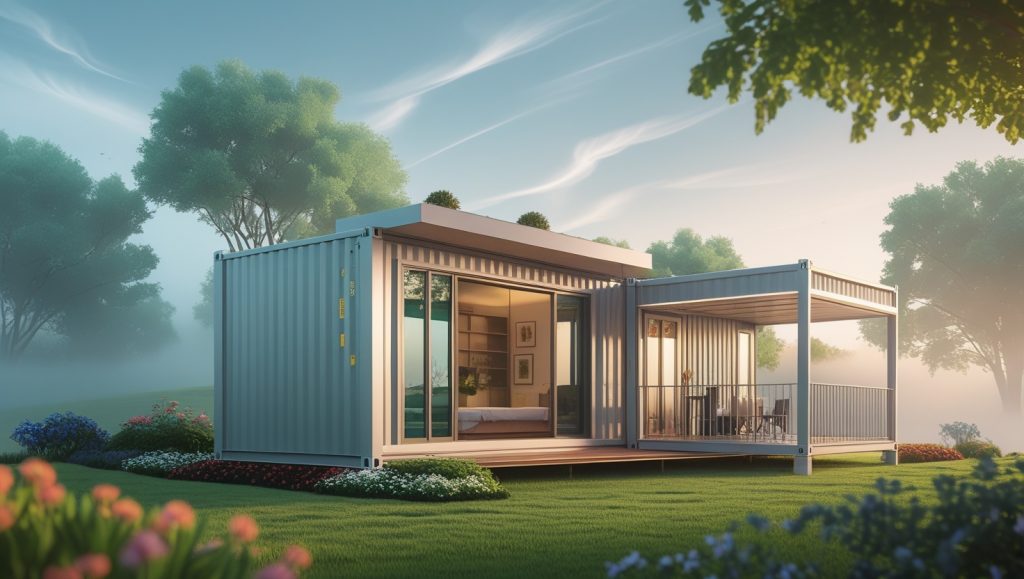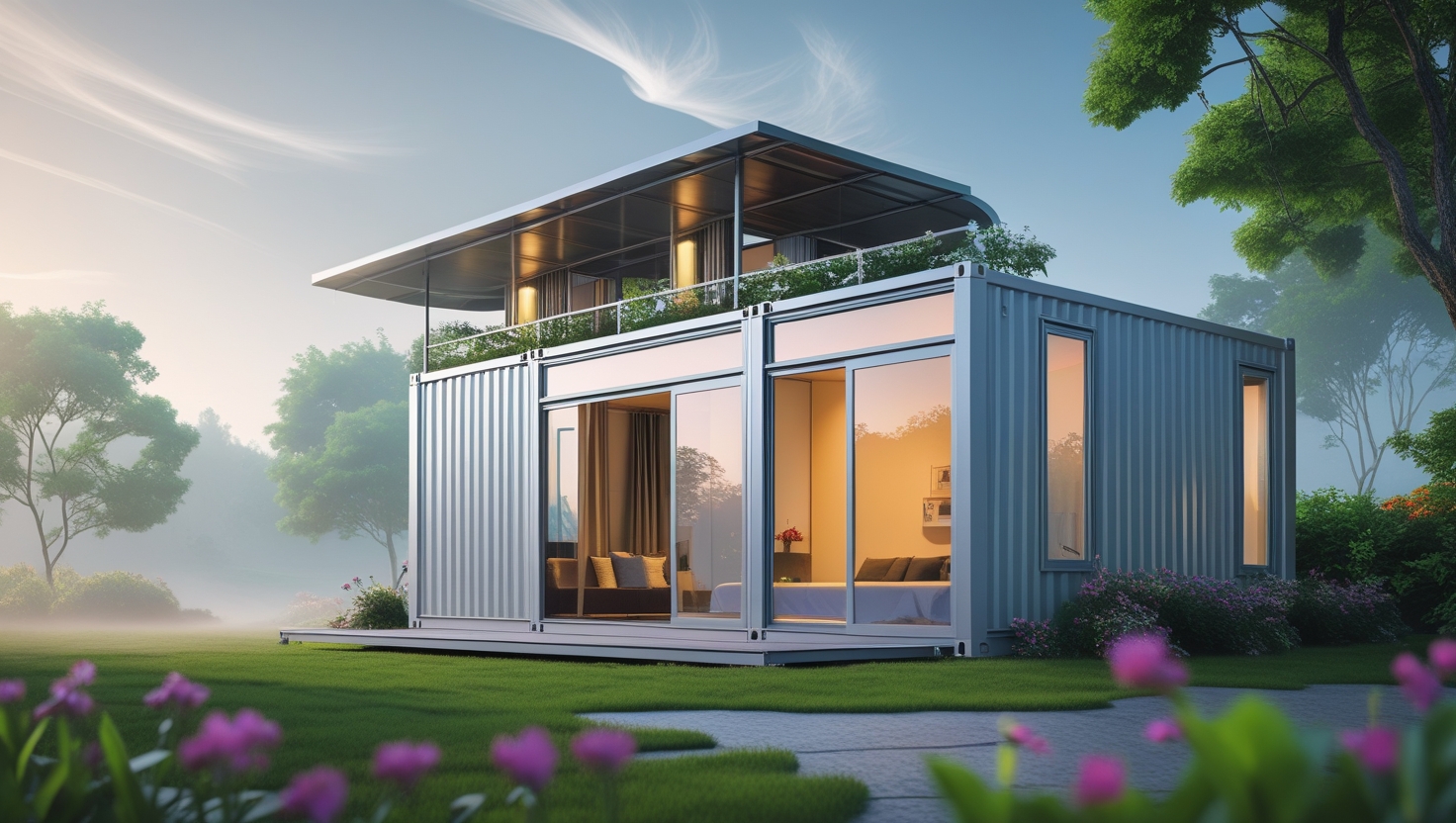Recently, container homes have emerged as a new response to the traditional problems of housing. Made from recycled shipping containers, these units offer a mix of greenness, low-cost prices and present-day architectural designs. Container houses are therefore a double-barreled answer to both the concerns regarding our environment and the increasing global need for accommodation. It is my intention in this paper to explore numerous benefits, challenges and future prospects for container homes.



What are Container Homes?
Container houses refer to residential buildings that are built using steel shipping containers which no longer serve their transport purpose. In most cases these containers measure either 20 or 40 feet long and they can be converted into living areas. The inherent sturdiness and durability of these structures make them suitable candidates for housing materials. Therefore one can use them singly or combine many of such containers thereby forming multi-storey sets which give room for flexible designing.
Sustainability and Environmental Impact
Perhaps the most important positive sides of container houses consist in their environmental effect. Arguably this is due to reduced demand on natural resources since reusing shipping containers lessens the necessity for conventional construction supplies like bricks or cement that consume much energy while being fabricated (Velosa 2015). Additionally, making these containers useful again will lead to waste reduction in landfills (Lopez 2017).
Less resources are used during the construction process of container houses compared to conventional methods. Numerous container homes are designed to save energy by installing solar panels, rain water harvesting systems and green roofs. This is in line with global attempts to reduce household carbon footprints that combat climate change.
Cheapness
Container houses sometimes cost less than traditional ones. The raw materials for a container house can be cheap as the cost of a shipping container can range from $1,500 to $5,000 only. Also, it takes a shorter time in building this type of homes hence reducing labor costs. Container homes provide an excellent solution for individuals and families who require affordable living spaces.
The mobility of container homes facilitates their transportation and assembly hence making them suitable for remote or disaster-prone areas. Therefore, people can have access to safe and robust shelter even in difficult times.
Designing and aesthetics
By contrast with the industrial look associated with shipping containers, container houses often appear elegant and contemporary. Architects and designers have taken up the challenge of converting these metal boxes into comfortable well designed residences. Through proper insulation windows and interior finishes, a container house may as well match conventional ones for comfort as well as design purposes.
Creative Architectural Designs Enabled by Shipping Containers
The way shipping containers can be stacked, arranged and combined in different configurations makes their modular nature very adaptable. This flexibility allows for various housing units to be developed that are one of a kind. It is this ability that ensures homeowners’ homes are built to meet their specific tastes and needs.
Challenges And Considerations
Despite their many benefits, container houses have challenges. Insulation is one of the primary concerns. Without insulation, steel conducts heat very well making it too hot in summer and too cold in winter for comfort within a container house structure. Good quality insulation materials and techniques must be in place to ensure these homes can be used throughout the year.
Additionally, there may be issues with zoning and building regulations. Container houses may not meet all local building codes due to which they often become illegal forms of habitation when acceptance is denied by them. The prospective homeowners should comply with these rules so as to ensure that their container home meets all requirements of local laws.
Apart from that, structural integrity of used shipping containers has to be checked thoroughly. Used shipping containers that were previously used for transporting hazardous goods or those exposed harsh conditions may not safe to reside in. For purposes of safety and prolonged lifespan, proper inspection at the time of purchase or hire as well as subsequent certification must be done on them.
The Future of Container Houses
Looking into the future, container homes have a bright outlook as many individuals gradually acknowledge their possibilities. The functionality and attractiveness of these houses are ever on the rise due to the improvements in design and construction. For instance, advances in insulation technology and sustainable building practices are leading to energy efficient and environmentally friendly container houses.
Container houses provide a solution for effective land utilization as urban areas become more congested. Upward stacking can be used to form multi-storey apartment complexes that fully utilize minimal space. Therefore, urban planners and developers will find this option appealing when dealing with housing crises.
Moreover, contemporary attitudes towards tiny house movements and minimalist living lend themselves well to container homes. There is a growing trend towards downsizing in order to live a simple life, thus making compact and efficient shipping container dwellings an attractive option.
Governments along with agencies now recognize that containers can help alleviate homelessness or provide emergency relief after natural disasters in developing countries. They are pocket-friendly, fast-to-build, portable housing solutions that are suitable for temporary or permanent needs.
Conclusion
Innovation, sustainability and practicality are condensed in container houses. As the world grapples with environmental emergencies and housing issues, these distinct buildings present a way out. However, the demerits of container houses are insignificant compared to the merits they bring along. Container houses are expected to become ordinary dwellings as technology advances and designs improve further. In this sense, container homes will provide permanent eco-viable affordable housing for posterity if design and technological advancements continue.
